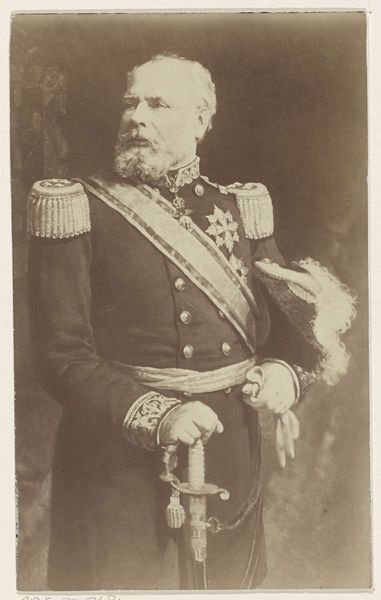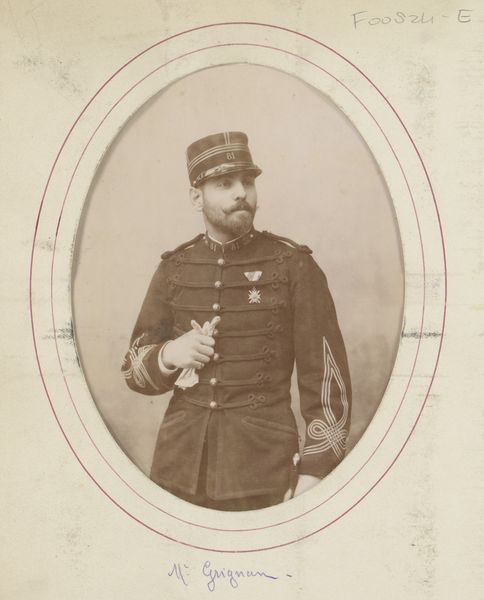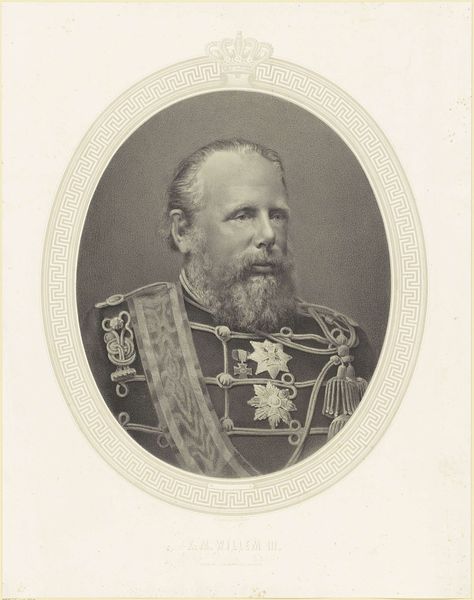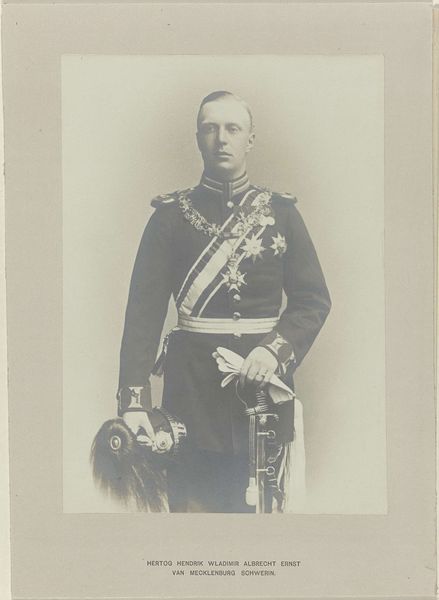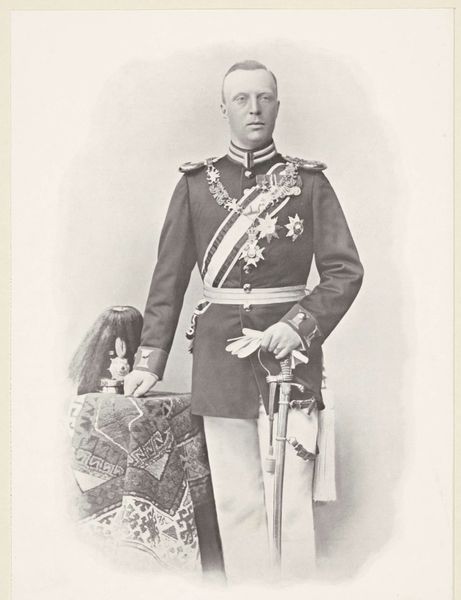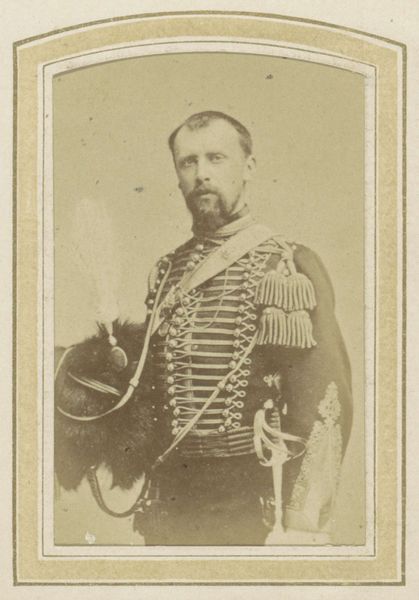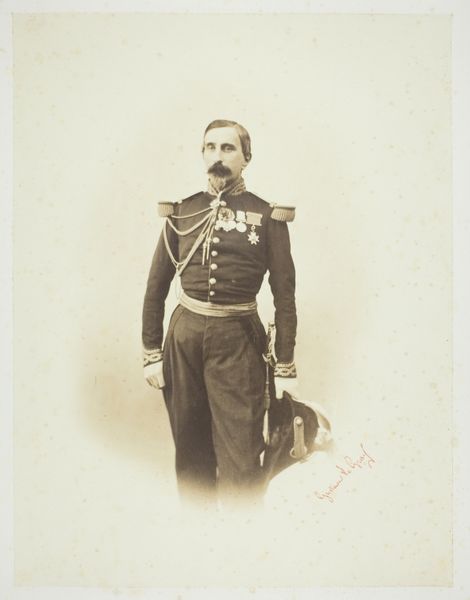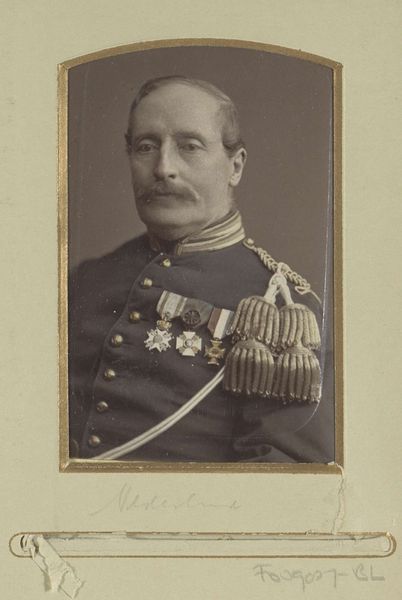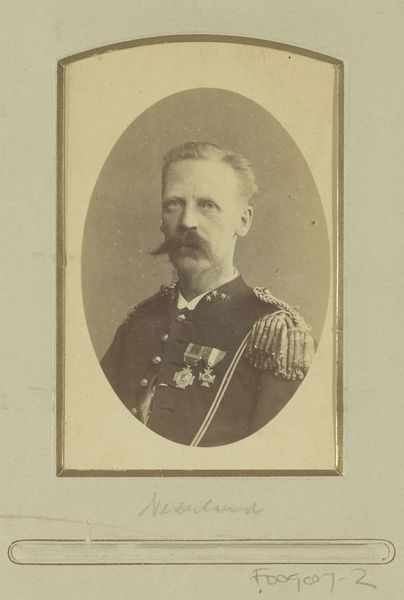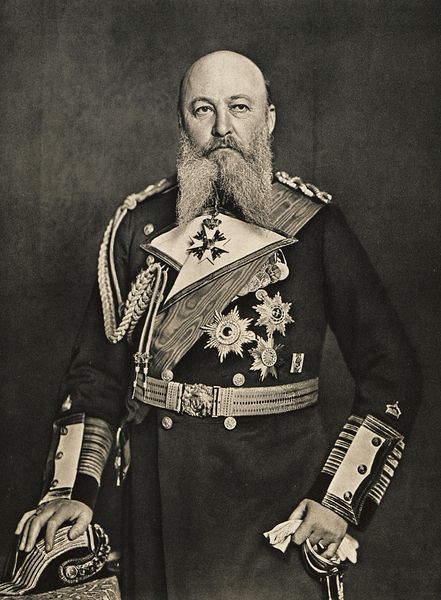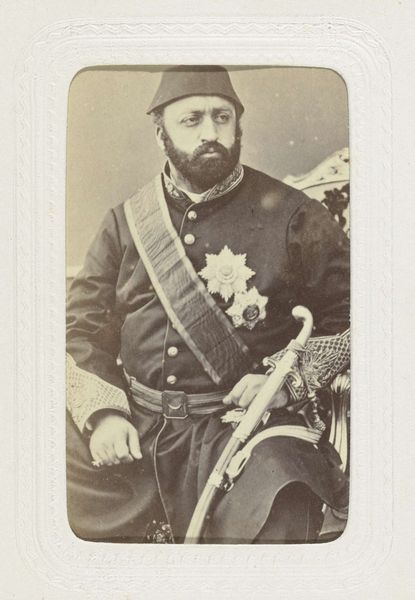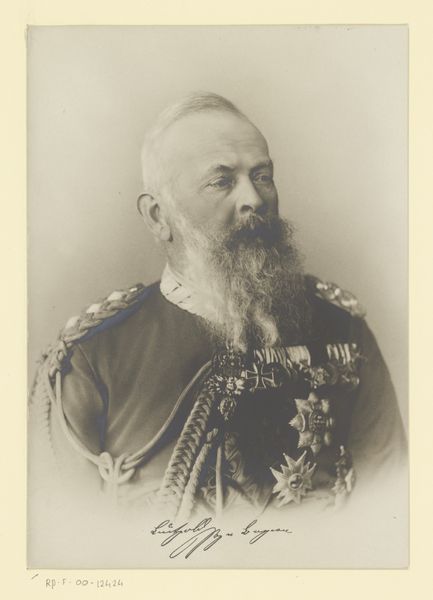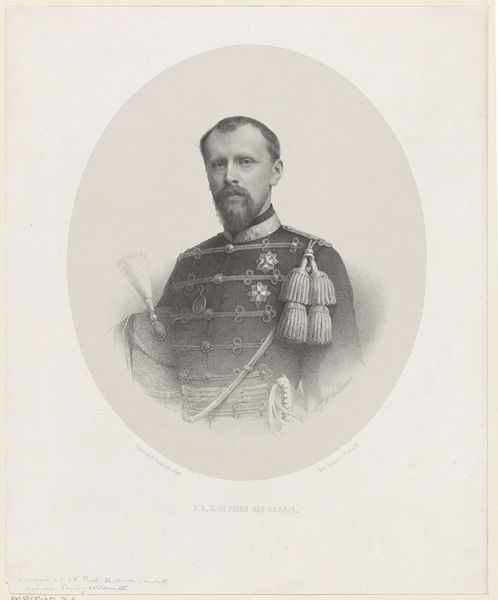
Dimensions: height 164 mm, width 108 mm
Copyright: Rijks Museum: Open Domain
Editor: Here we have Sergei Lvovich Levitsky’s “Portret van Alexander III, keizer van Rusland,” made sometime between 1860 and 1900. It’s a daguerreotype, which is an early photographic process. Seeing all of those medals, it definitely speaks of wealth and power. What stands out to you about this photograph? Curator: What strikes me is the daguerreotype process itself. The materiality of the silver-plated copper, polished to a mirror shine, becomes a signifier of status. The intense labor involved in creating this single, unique image is key. This isn’t just a picture of Alexander III; it's a display of industrial prowess and access to specialized craft. Look at the way light reflects off the medals – these were made in factories, symbolic of wealth and power expressed through mass production. What do you make of the choice to use this medium specifically? Editor: I hadn't considered the industrial side. So, the choice of a daguerreotype instead of a painted portrait is almost a statement about embracing modernity? Curator: Precisely! It signifies a move away from aristocratic patronage of individual artists and toward an embrace of technological advancements. Even the uniform, with its intricate braiding, tells a story about the textile industry, mass production for military power, and access to luxurious goods. Consider how many hands contributed to this "single" image, from the miners extracting silver to the factory workers producing the textiles of his clothing. It really prompts you to think about labor! Editor: That shifts my perspective completely. I was so focused on the subject. Curator: The subject *is* important, but consider how his power is communicated through the material processes. It challenges the typical view of portraiture, which focuses on the individual, toward something much broader and culturally grounded in consumption and material value. Editor: I never thought I could analyze a portrait photograph with a material lens. Thanks for opening my eyes! Curator: It’s about recognizing how intertwined power, labor, and material culture really are!
Comments
No comments
Be the first to comment and join the conversation on the ultimate creative platform.
